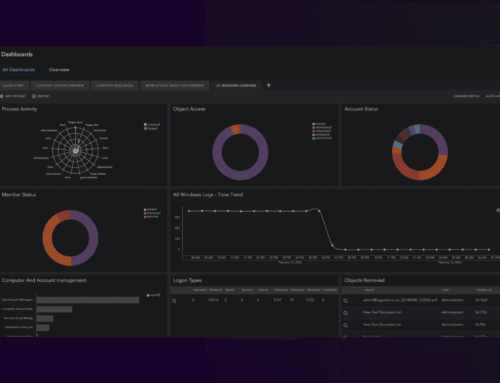by Martha Chrisander, Head of Product Marketing, LogPoint
It’s not news that many employees around the world are working from home to help flatten the curve. With such a large number of people working outside their office network security, it’s more important than ever to ensure that remote workspaces are secure against cyberattacks.
Watch our on-demand webinar on working remotely here: LogPoint Remote Working
When hackers sense an opportunity
Global crises are the perfect occasion for hackers, and the COVID-19 outbreak is no exception. Cyberattacks, such as phishing emails and other malicious activity, are increasing and threatening businesses that have less time to be vigilant against attack. One study by Microsoft found that hackers have attacked every country in the world with COVID-19-themed cyberattacks.
However, once business returns to normal, employees will likely continue working remotely. Studies show that at-home workers perform better, and value scheduling flexibility over wage increases. While working outside the office can boost worker morale, it can also lead to challenges when it comes to cybersecurity. How do businesses ensure that remote employees aren’t opening up a potential security risk?
Being safe with remote workers
When it comes to having a significant remote workforce, IT departments have to make some tough choices. Employees aren’t using the office network, and that means they need to go through the same private network, putting a strain on the infrastructure. One international LogPoint customer had to increase their Internet connectivity by 4000% to support remote employees.
Most companies don’t plan for challenging scenarios like deciding whether to reduce cybersecurity or prevent employees from working from home. Businesses need a tool that gives situational awareness of the infrastructure, such as a SIEM, to protect against attack.
SIEM stands for security information and event management, and it’s a tool that collects and analyzes event data from devices or applications within your infrastructure. A SIEM automatically identifies and sends alerts about any critical incidents or abnormalities in your system.
A SIEM can detect suspicious behaviors, even from remote workers, to help prevent attacks. Here are some common cyberattacks that we see more and more as employees are working remotely and how a SIEM like LogPoint can help.
CEO fraud
We’ve seen an increase in CEO fraud in phishing emails because hackers are more likely to be successful when they impersonate a trusted leader. To help detect email scams, you need a solution that can detect when an email account is malicious, and when an attacker uses an email domain similar to the business domain.
Read more about CEO fraud and how LogPoint can help protect against it.
Compromised credentials
Attacks based around stealing credentials are also on the rise. If you’re not already using a password manager, now is the time to do so to make sure your passwords are secure. You should also be vigilant and always check the links you’re clicking on by hovering over them to make sure they are legitimate.
If an account does get compromised, read more about LogPoint can help you identify the attack and stop it before a data breach.
Ransomware
Hackers are targeting pandemic-related organizations to spread ransomware, such as a recent cyberattack on a hospital testing center. Ransomware attacks are continually changing, so businesses need ransomware detection to identify threats. Ransomware detection can send an alert whenever there is unusual data activity on storage systems within a specific time. Whenever data is deleted, created or modified in high volumes, it is a warning sign of suspicious activity.
Contact LogPoint for more information about securing your remote workforce against attack.






